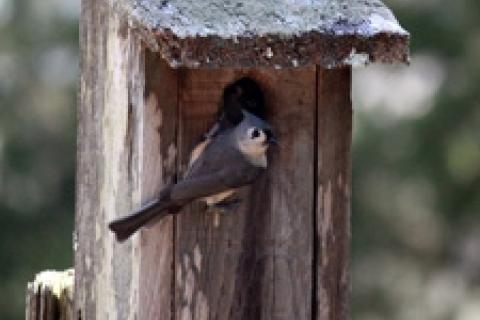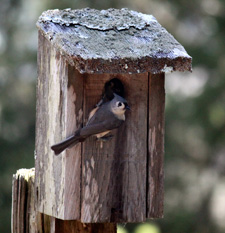
 It's not hard to pick up the movement of birds in one's field of vision. Especially larger birds like hawks or birds with a color such as a white egret. Birdwatching for smaller migratory songbirds that are reclusive by nature, holding close to woodlands, can be more of a challenge. Anyone can be a birder — all you need is some simple gear and a little knowledge.
It's not hard to pick up the movement of birds in one's field of vision. Especially larger birds like hawks or birds with a color such as a white egret. Birdwatching for smaller migratory songbirds that are reclusive by nature, holding close to woodlands, can be more of a challenge. Anyone can be a birder — all you need is some simple gear and a little knowledge.
Keeping a sharp eye for songbirds is greatly aided by using a pair of binoculars. The Bass Pro Shops Rubber Armor Binoculars provide ease of use and durability for a great value. The 7X35 model runs just $29.99 and the 10X50 pair with higher magnification goes for just $10 more; they are both available in camo. Another option for optics is a spotting scope, which can make the difference when viewing birds at a great distance.
A pocket field guide for bird identification is the second most essential thing to carry. Many times the viewing of a bird will be brief since they are constantly on the move, and the best chance to identify them is looking at photos while the visual is still fresh. Taking a brief moment to properly identify a species can avoid a lot of confusion later trying to recollect birds that looked similar. A larger bird ID book is handy to keep at home to verify bird habits, location maps and variations in color for male, female and immature birds.
Being in the field when birdwatching requires a level of comfort and some protection from the elements. Hiking boots offer support during the day, and a water bottle can serve to keep one hydrated. A small bag can be used to carry the water, sunscreen and bug spray as needed. Wear long pants, long-sleeve shirts and a hat, remembering to choose natural or earth-tome colors to blend in better with the surroundings, since your best chance to observe birds are when they are acting natural.
Like most wildlife, birds like edge habitat so you'll need to look for them in certain areas. Some good places include where an agriculture field meets the forest, where a hardwood swamp runs or even something recent like a clear cut in the woods. If looking for a certain species, like the tufted titmouse, they prefer deciduous woodlands, parks and suburbs so use that knowledge to narrow your search.
Experienced birders share a lot of information during group bird walks, so check with your local recreation department or bird seed store to learn when and where birding trips occur. On a recent birding trip I was with noted ornithologist Dr. Sid Gauthreaux. He can identify some birds before they are seen because he knows their bird song. Going with a pro achieves maximum identification, and helps everyone relate to the excitement of birding.
- 6961 views

